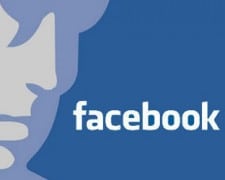 Facebook’s marketing and advertising encourages users to buy products in stores and online, the social-networking company said in a joint report with ComScore. The move may counter criticism and research that questioned the impact of promotions on the site—as well as GM’s recent pullback from display ads on the site.
Facebook’s marketing and advertising encourages users to buy products in stores and online, the social-networking company said in a joint report with ComScore. The move may counter criticism and research that questioned the impact of promotions on the site—as well as GM’s recent pullback from display ads on the site.
Andrew Lipsman, VP of Industry Analysis at comScore, and Graham Mudd, Head of Measurement Partnerships at Facebook, will be presenting findings from this research at the ARF’s Audience Measurement 7.0 conference on Tuesday, June 12 in NYC.
“The Power of Like 2: How Social Marketing Works,” specifically includes analysis demonstrating ways in which exposure to earned and paid media on Facebook drives behavioral lifts in purchase behavior. The analysis leverages data and insights from the comScore Social Essentials and comScore AdEffx products.
“Social media continues to emerge as an important marketing channel and major brand marketers are devoting more time and attention to understanding its impact on consumers,” said Lipsman. “While marketers understand the importance of a channel that now accounts for 1 in every 7 minutes spent online, many are challenged to quantify its effectiveness. The Power of Like research sheds new light on how brands are able to deliver earned and paid media at scale, amplify its effects from Fans to Friends of Fans, and understand how exposure to these media can drive the desired consumer behaviors, including online and in-store purchase.”
Key insights:
–Brands can maximize the impact of their social marketing programs on Facebook by leveraging a framework that helps them move beyond Fan acquisition to delivering reach, impact, and measurable marketing ROI. Using the Brand Page as a control panel for creating social marketing programs, brands should focus on benchmarking and optimizing on the following dimensions to deliver against their broader marketing objectives:
Fan Reach – Exposure in the News Feed
Engagement – Fans interacting with Brand Page marketing content
Amplification – Viral delivery of marketing content from Fans to Friends of Fans
–Most leading brands on Facebook achieve a monthly Amplification Ratio of between 0.5 and 2.0, meaning that they extend the reach of their earned media exposure of Fans to Friends of Fans by 50-200%. These ratios can be increased to improve brand reach by focusing on tactics to optimize Fan Reach and Engagement or by supplementing with paid advertising strategies.
— Users who saw unpaid marketing messages on the social network about Starbucks bought an item at the coffee chain within four weeks 38% more often than those who didn’t. The increasing cumulative lift in purchase behavior among exposed Starbucks Fans and Friends of Fans provides evidence of a latent branding impact of earned media exposure. This same latent effect was observed in the lift in purchase incidence among exposed Fans and Friends of Fans of Target. The research showed that Facebook members who “like” the retailer, along with their friends, bought at Target 21% more frequently–both in-store and online.
–Facebook represents a unique marketing channel that enables Paid, Earned and Owned Media to be leveraged to create a virtuous cycle of brand impact. Brands use display ads and other paid media (Paid) to attract Fans to the Brand Page (Owned), which serves as a platform for marketing communications that reach Fans and Friends of Fans (Earned) in the News Feed and other sections of the website. These communications can then be supplemented through paid display campaigns, such as Sponsored Stories and Promoted Page Posts (Paid), to maximize reach and brand resonance.
–Concentrated social media campaigns, such as those performed during important marketing promotions, can significantly amplify the reach of earned media exposure. Such amplification may drive increased awareness and consideration that is manifested through higher brand purchase behavior among exposed Fans and Friends of Fans.
–The causal effects of earned media exposure on Facebook Fans and Friends of Fans can be isolated using a test vs. control methodology. In the case of Starbucks, exposed Fans and Friends of Fans showed statistically significant lifts in in-store purchase incidence for each of the four weeks following earned media exposure.
–Exposure to Facebook Premium Ads also drove statistically significant lifts in both online and in-store purchase incidence for a major retailer over a four-week post-exposure period. This research highlights the importance of using view-through display ad effectiveness.





